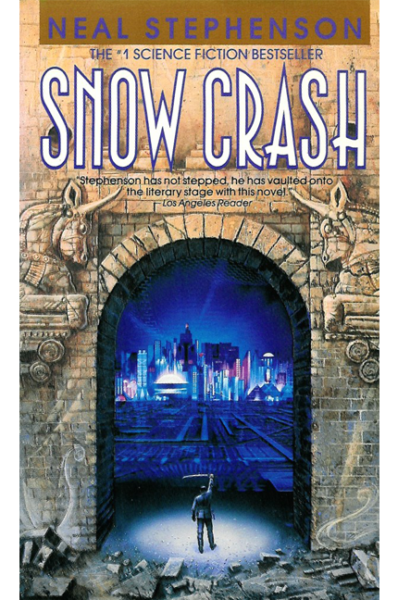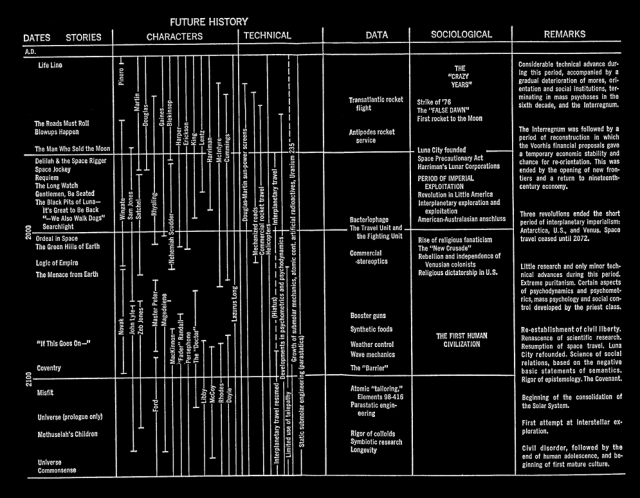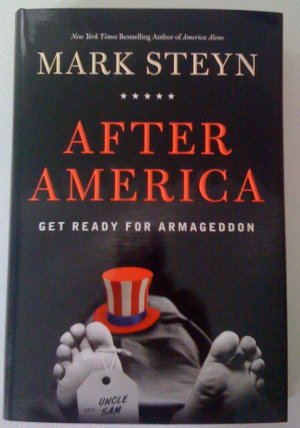World War Two
Published 30 Oct 2021The Allies may be on the verge of a breakthrough in North Africa, but they’re losing at sea to the Japanese this week, and the Axis are also advancing in the Caucasus, though the street by street struggle at Stalingrad continues as always.
(more…)
October 31, 2021
Nazi General Dies of Heart Attack – WW2 – 166 – October 30, 1942
Soul Cakes & Trick-or-Treating
Tasting History with Max Miller
Published 30 Oct 2020Help Support the Channel with Patreon: https://www.patreon.com/tastinghistory
Follow Tasting History here:
Instagram: https://www.instagram.com/tastinghist…
Twitter: https://twitter.com/TastingHistory1
Reddit: r/TastingHistoryLINKS TO INGREDIENTS & EQUIPMENT**
Canon EOS M50 Camera: https://amzn.to/3amjvwu
Canon EF 50mm Lens: https://amzn.to/3iCrkB8
Currants: https://amzn.to/2T3qItA
Nutmeg: https://amzn.to/2IGDlcb
Clove: https://amzn.to/3dyNWRP
Mace: https://amzn.to/31j625h
Saffron: https://amzn.to/3560pbP
KitchenAid Stand Mixer: https://amzn.to/37hsboALINKS TO SOURCES**
The Customs and Traditions of Wales by Trefor Owen: https://amzn.to/37gi6bt
The Book of Hallowe’en by Ruth Eda Kelley: https://amzn.to/3dDb41i
Trick or Treat: A History of Halloween by Lisa Morton: https://amzn.to/348t0xQ**Amazon offers a small commission on products sold through their affiliate links, so each purchase made from this link, whether this product or another, will help to support this channel with no additional cost to you.
Editor: WarwicSN – https://www.youtube.com/WarwicSN
SOUL CAKES
ORIGINAL 16TH CENTURY RECIPE (From Elinor Fettiplace’s Receipt Book)
To make Cakes
Take flower & sugar & nutmeg & cloves & mace & sweet butter & sack & a little ale barm, beat your spice & put in your butter & your sack, cold, then work it well all together & make it in little cakes & so bake them, if you will you may put in some saffron into them or fruit.MODERN RECIPE
INGREDIENTS
– ½ Cup Lukewarm Ale (Below 100°F/38°C)
– 1 Teaspoon Yeast
– 3 Cups (360g) Flour
– ½ Cup (100g) Sugar
– 4 Tablespoons Butter Softened
– ½ Teaspoon Salt (if you’re using unsalted butter)
– ¼ Teaspoon Nutmeg
– ¼ Teaspoon Clove
– ¼ Teaspoon Mace
– ⅓ Cup Sack or Sherry
– 1/4 Teaspoon Saffron Threads (optional)
– 3/4 Cup Dried Fruit, plus more for decoration. (Optional)
– 1 Egg for Egg Wash (Optional)METHOD
1. Create an “ale barm” by mixing the yeast with the lukewarm ale and letting sit for 10 minutes. If you are using saffron, mix that into the sherry and let steep.
2. In a large bowl, mix the flour, sugar, salt, nutmeg, clove, and mace together. Add the yeasted ale and work it in. Then work in the softened butter and the sack with saffron along with any fruit you are using. Mix until everything the dough comes together, then knead for 5 – 12 minutes. The longer you knead, the more bread-like the cakes will be, but the more they will rise.
3. Allow dough to rise for 1 hour (it will likely not double in size), then punch the dough down and form into small cakes. Cover and allow the cakes to rise for another 20 minutes while you preheat the oven to 400°F/200°C.
4. When the cakes have puffed up, add the optional egg wash and/or additional fruit, or form a cross on the top of each cake using the back of a knife (do not cut the cross in). Then back fro 20 minutes. When baked, allow to cool before serving.#tastinghistory #halloween #soulcakes
QotD: We’re still trapped in Heinlein’s “Crazy Years”
In Robert Heinlein’s famed “Future History” he constructed an elaborate timeline of thing to come, to provide a structure for his short stories.
Looking forward from the year 1940, when the timeline was first formed, it was reasonable, even conservative, guesswork to predict the moon landing by the 1980’s, forty years later, since the first powered flight by the Wright Brothers had been forty years earlier. Heinlein’s Luna City founded in 1990 a decade or so later, with colonies on Mars and Venus by 2000. Compare: a submersible ironclad was written up as a science romance by Jules Verne in 1869, based on the steam-powered “diving boat” of Robert Fulton, developed in 1801. In 1954 the first atomic-powered submarines — all three boats were named Nautilus — put to sea. The gap between Verne’s dream and Rickover’s reality was eight decades, about the time separating Heinlein’s writing of “Menace from Earth” and its projected date.
Looking back from the year 2010, however the dates seem remarkably optimistic and compressed. We have not even mounted a manned expedition to Mars as yet, and no return manned trips to the Moon are on the drawing boards.
One prediction that was remarkably prescient, however, was the advent of “The Crazy Years” described as “Considerable technical advance during this period, accompanied by a gradual deterioration of mores, orientation, and social institutions, terminating in mass psychoses in the sixth decade, and the interregnum.”
He optimistically predicts a recovery from the Crazy Years, the opening of a new frontier in space, and a return to nineteenth-century economy. Full maturity of the human race is achieved by a science of social relations “based on the negative basic statements of semantics.” Those of you who are A.E. van Vogt fans will recognize our old friends, general semantics and Null-A logic cropping up here. Van Vogt, like Heinlein, told tales of a future time when the Non-Aristotlean logic or “Null-A” training would give rise to a race of supermen, fully integrated and fully mature human beings, free of barbarism and neuroses.
Here is the chart [full size version here]. Note the REMARKS column to the right.
What Heinlein failed to predict was that the Crazy Years would simply continue up through 2010, with no sign of slackening. Ladies and gentlemen, we live in the Crazy Years.
John C. Wright, “The Crazy Years and their Empty Moral Vocabulary”, John C. Wright, 2019-02-18.
October 30, 2021
Revisiting the Battle of Britain
In The Critic, Phillips O’Brien has a historical hot take on the popular view of the Battle of Britain:

The Chain Home Tower in Great Baddow Chelmsford, a key part of Britain’s air defence network.
Photo by Stuart166axe via Wikimedia Commons.
The Battle of Britain was a lopsided affair. One side was much stronger and more modern, with advanced integrated detection technologies, superior logistics and intelligence, excellent fighter control, and much better production facilities churning out far more of the most important equipment.
The other side was plucky, flying from considerably less developed facilities, operating under severe handicaps in intelligence and flying time over the battle area, lacking the proper technology to achieve anything like what it wanted, and with a severely underutilized industrial base.
The stronger side was Great Britain and the plucky underdogs were the Germans.
The Battle of Britain was always one that the Germans were bound to lose quickly and disastrously. The key phase only lasted a few weeks during which German losses became unsustainably high and the Luftwaffe had to resort to the completely ineffective, if dramatic seeming, night time bombing of London and other British cities.
When the Battle of Britain entered this Blitz stage in early September, it was an admission by the Germans that they could not fly in the day over the UK and survive, and therefore they had no chance of actually damaging anything meaningfully in the UK.
Unfortunately this realistic vision of the Battle of Britain makes for both bad movies and bad politics, and for that reason a different vision has come down to us — that of plucky little Britain, relying on “the few” to defend itself against the mass power of the Luftwaffe and Nazi Germany.
This myth — partly witting, partly not — started to be created even before the Battle of Britain actually reached its climax, and it became such a useful one that it has persisted to today. Winston Churchill’s famous speech that “never has so much been owed by so many to so few” was given on August 20, 1940, though the Battle of Britain did not reach its highpoint until the two weeks between August 24 and September 6.
In that sense Churchill’s stirring phrase was a prophecy not a proper analysis — and it was a prophecy based on a fundamental misunderstanding of how strong the Luftwaffe and Germany were at the time. Churchill thought the Luftwaffe was twice as strong as it really was and that Germany was producing twice as many aircraft as it actually was. He believed that Britain had to rely on the few. It just wasn’t true.
Britain won the Battle of Britain because it was more powerful than Nazi Germany in the key areas the battle tested and because Britain was not standing alone, but fighting with a world-wide network of assets that meant it was never going to lose.
The Germans had one advantage going into the battle — the number of aircraft on hand (though the numbers of deployable German fighters was only a little higher than that of the RAF). However even this numerical advantage was partly irrelevant as German bombers, small, slow two-engine machines such as the HE-111 and DO-17, were inadequate to the task and the famous Stuka dive-bombers, even slower and more primitive, were more dangerous for their crews to fly than they ever were to the British being bombed by them.
In response the RAF had radar, which could see the Germans coming and give the RAF time to prepare, could fly for far longer over the Battle areas from its bases in southern England than the Germans could fly from their bases in France, and could rescue the majority of its pilots show down while the Germans lost theirs that survived to British prisoner of war camps.
How to Make the World’s Best Router Plane | Episode 1
Paul Sellers
Published 29 Oct 2021Can a homemade wooden router plane give you what an all-metal one gives you? It absolutely can!
There are detailed drawings and parts list available here: https://paulsellers.com/router-plane-…
Paul has wanted to answer the need for a low-cost hand router plane that does not, in any way, take second place to any of the established ones made by Stanley and Record in the last century. Neither does it compromise on the utility offered by any of the high-end expensive ones.
This episode is Paul’s answer to a worldwide problem of supply and demand and he guarantees that you will not only love making your own, fully adjustable router plane, but also owning one for a lifetime of work.
Can’t wait for Episode 2 to be released next week? You can watch it it here for free: https://woodworkingmasterclasses.com/…
——————–
Want to learn more about woodworking?
Go to Woodworking Masterclasses for weekly project episodes: http://bit.ly/2JeH3a9
Go to Common Woodworking for step-by-step beginner guides and courses: http://bit.ly/35VQV2o
http://bit.ly/2BXmuei for Paul’s latest ventures on his blog
——————–
Instagram: http://bit.ly/2oWpy7W
Twitter: http://bit.ly/33S7RFa
Pinterest: http://bit.ly/35X5uTf
“Pretendians” … members of the Wannabe tribe … people who fake First Nations ancestry for personal gain
I missed Thursday’s NP Platformed newsletter when it first came out, where Colby Cosh praised a CBC “longread” which dug into the oft-trumpeted heritage of a prominent Saskatchewan university official and did a thorough job of demolishing her claims to First Nations ancestry. This might have seemed unwarranted cruelty, except that those false claims had materially aided her rise to her current position with the university and the federal government:

Carrie Bourassa with media.
Lead photo in Geoff Leo’s article for the CBC – https://www.cbc.ca/newsinteractives/features/carrie-bourassa-indigenous
The result is not only astonishingly well-written and funny — it’s unanswerable. Bourassa has been caught telling utterly insupportable stories about her own past, making lurid claims of racial abuse and colonial trauma in a fanciful Indigenous household bearing no resemblance to the wealthy white one in which she actually grew up. When she got wind that the CBC was working on a story, Bourassa used the resources of the institute to organize a PR defence and arrange for an “open letter”, whose signatories are surprised and offended to find their names attached.
And if the story’s soundness is doubted, one need only refer to the rebuttal that Bourassa published yesterday. Read it and hear the scratching of ticked-off boxes. “I refuse to be victimized by this man who calls himself a journalist. This entire smear campaign stems from lateral violence … nothing less than tabloid journalism … it is apparent that I must adhere to western ideologies.”
But Bourassa’s response, while slinging the jargon generously, does nothing to refute Leo’s reporting. The Saskatchewan scholar lashes herself to the mast of a late-life Métis adoption, which does nothing to explain her tales of making mukluks and beadwork with her “half-breed” “gramps” at age seven.
No prior news item about Aboriginal stolen identity has ever been as strong and complete as this one — and that is why it is worthy of our attention, and of the resources dedicated to it. Bourassa has earned fantastic sums as a researcher and administrator of public funds. Most of this would have been utterly unavailable to her as an ordinary white social worker from the vodka-drinking parts of Saskatchewan. She is in a paramount position of importance in a national bureaucracy dedicated to Indigenous well-being and cultural preservation: her endless nose-stretchers about Aboriginal identity make her position completely untenable.
So will anything be done about it? If the federal government and the University of Saskatchewan are willing to overlook the case made here by the CBC, they will overlook absolutely anything. Falsely claiming Aboriginal descent is one sinful thing; lying floridly and repeatedly to audiences about your personal history of suffering racist treatment is another. (Can one “adopt” experiences? We suppose one can, with a little imagination!) Bourassa seems determined to fight, and to exploit her position to do it. So the institutions to which she has attached herself may have to act — or suffer a disastrous blow to their credibility among First Nations and settlers alike.
Look at Life — Turning Blades (1962)
PauliosVids
Published 20 Nov 2018The world of the helicopter in 1962; from the Belvedere to the experimental Rotodyne VTOL craft.
QotD: Britain as a nation
I have spoken all the while of “the nation”, “England”, “Britain”, as though 45 million souls could somehow be treated as a unit. But is not England notoriously two nations, the rich and the poor? Dare one pretend that there is anything in common between people with £100,000 a year and people with £1 a week? And even Welsh and Scottish readers are likely to have been offended because I have used the word “England” oftener than “Britain”, as though the whole population dwelt in London and the Home Counties and neither north nor west possessed a culture of its own.
One gets a better view of this question if one considers the minor point first. It is quite true that the so-called races of Britain feel themselves to be very different from one another. A Scotsman, for instance, does not thank you if you call him an Englishman. You can see the hesitation we feel on this point by the fact that we call our islands by no less than six different names, England, Britain, Great Britain, the British Isles, the United Kingdom and, in very exalted moments, Albion. Even the differences between north and south England loom large in our own eyes. But somehow these differences fade away the moment that any two Britons are confronted by a European. It is very rare to meet a foreigner, other than an American, who can distinguish between English and Scots or even English and Irish. To a Frenchman, the Breton and the Auvergnat seem very different beings, and the accent of Marseilles is a stock joke in Paris. Yet we speak of “France” and “the French”, recognizing France as an entity, a single civilization, which in fact it is. So also with ourselves. Looked at from the outside, even the cockney and the Yorkshireman have a strong family resemblance.
George Orwell, “The Lion And The Unicorn: Socialism and the English Genius”, 1941-02-19.
October 29, 2021
Lying About the Jews in Film – WW2 Special
World War Two
Published 28 Oct 2021How do you convince your people to hate and fear their neighbors, to support a genocidal war of aggression, and see you as their only hope? If you are Adolf Hitler or Joseph Goebbels, the answer is simple: you send them to the cinema.
(more…)
The Last Imperial Army Surrenders at Metz – Battle of Le Bourget 1870
Real Time History
Published 28 Oct 2021Much of the remaining French hope to stem the tide against the German armies comes from the more than 200,000 professional troops trapped in Metz since August. French Marshal Bazaine tries to negotiate with the Germans and even offers to march against the French republic. But to no avail.
» THANK YOU TO OUR CO-PRODUCERS
John Ozment
James Darcangelo
Jacob Carter Landt
Thomas Brendan
James Giliberto
Kurt Gillies
Albert B. Knapp MD
Tobias Wildenblanck
Richard L Benkin
Scott Deederly
John Belland
Adam Smith
Taylor Allen
Jim F Barlow
Rustem Sharipov» OUR PODCAST
https://realtimehistory.net/podcast – interviews with historians and background info for the show.» LITERATURE
Arand, Tobias: 1870/71. Die Geschichte des Deutsch-Französischen Krieges erzählt in Einzelschicksalen. Hamburg 2018Gouttman, Alain: La grande défaite de 1870-1871. Paris 2015
Milza, Pierre: L’année terrible. Paris 2009
» SOURCES
Braun, Lily (Hrsg.): Kriegsbriefe aus den Jahren 1870/71 von Hans v. Kretschman. Berlin 1911Crombrugghe, Ida de: Journal d’une infirmière. Paris 1871
Engels, Friedrich: Der Deutsch-Französische Krieg. Sechzig Artikel aus der “Pall Mall Gazette”. Berlin (Ost) 1957
Fontane, Theodor: Der Krieg gegen Frankreich. Bd. 3. Berlin 1873–1876
Großer Generalstab (Hrsg.): Der Deutsch-Französische Krieg, 1870–71. Bd. 1–3. Berlin 1874 ff.
Historischer Verein der Höhen von Spicheren des 67. Kaiserlichen Linienregiments der Infaterie (Hrsg.): Das Kriegstagebuch von Clovis Hardy. Soldat im 63. Linienregiment. Deutsch-Französischer Krieg 1870/71. Vom Lager in Châlons bis nach Ansbach in Bayern. O.O. [Esvres] O.J. [2011]
Kürschner, Joseph (Hrsg.): Der große Krieg 1870–71 in Zeitberichten. Leipzig o. J. (1895)
Meisner, Heinrich Otto (Hrsg.): Kaiser Friedrich III. Das Kriegstagebuch von 1870/71. Berlin, Leipzig 1926
Sternegg, Johann Khoss von: Schlachtenatlas des XIX. Jahrhunderts. Leipzig 1886
Steenackers, François-Frédéric: Histoire du gouvernement de la défense nationale en province, 4 septembre 1870-8 février 1871. Band 2. Paris o.J. (1884-1885)
» OUR STORE
Website: https://realtimehistory.net»CREDITS
Presented by: Jesse Alexander
Written by: Cathérine Pfauth, Prof. Dr. Tobias Arand, Jesse Alexander
Director: Toni Steller & Florian Wittig
Director of Photography: Toni Steller
Sound: Above Zero
Editing: Toni Steller
Motion Design: Philipp Appelt
Mixing, Mastering & Sound Design: http://above-zero.com
Maps: Battlefield Design
Research by: Cathérine Pfauth, Prof. Dr. Tobias Arand
Fact checking: Cathérine Pfauth, Prof. Dr. Tobias ArandChannel Design: Battlefield Design
Contains licensed material by getty images
All rights reserved – Real Time History GmbH 2021
The “third wave of anti-racist activism”
In Quillette, Jared Marcel Pollen reviews John McWhorter’s new book Woke Racism: How a New Religion Has Betrayed Black America:
McWhorter identifies three waves of anti-racist activism in the United States, the first of which was the fight against slavery and legalized segregation. The second was the struggle against racist attitudes, which sought to instill the idea that racial prejudice was a moral defect. The current strain of anti-racist activism constitutes a “third wave”, and like any movement in an advanced stage, it is characteristically decadent. The Elect’s ideology, like so much contemporary social justice, is a grotesque contest of elite moral exhibitionism, inordinately preoccupied with policing speech and regulating behavior. It is fundamentally performative and, above all, pretentious, in both the etymological sense of the word (to pretend) and in its common usage (attempting to impress).
This approach to battling racism tends to appeal to well-educated white people afflicted by a guilty conscience. The only remedy for them — the load-bearing pillar of white America’s new moral responsibility — is a declaration of one’s own “privilege”. This, McWhorter assures us, is not progress or even compassion, it is a form of self-help. “The issue,” he writes, “is not whether I or anyone else thinks white privilege is real, but what we consider the proper response to it.” [Italics in original.] Privilege is indeed real, and making oneself aware of it is morally important, but when employed as a cudgel, it becomes a monstrous prop.
Encouraging black people to see themselves as perpetual victims, while assigning to white people the task of becoming enlightened enough to recognize their own inherent and irredeemable racism creates a culture of soft-bigotry, furnished by polite lies and low expectations. “White people calling themselves our saviors,” McWhorter writes, “make black people look like the dumbest, weakest, most self-indulgent human beings in the history of our species, and teach black people to revel in that status and cherish it as making us special.”
This endless condescension is writ large in DiAngelo’s work, and we can see it in the training seminars now required by many companies, in which things like “logic” and “punctuality” are ascribed to “Whiteness”. Do the people running these seminars really believe that black people can’t be rational and on time? Do they think that science and math are things that only white kids are good at? And, McWhorter asks, if black students perform poorly on standardized tests, is it fair to assume that the test is racist, and should therefore be discontinued, as the Elect now propose? Would it not be better to ensure that those students have access to resources and tutoring? Far from helping anyone, these distortions of essence and aptitude actually hurt the advancement of what is now commonly referred to as “racial equity”.
The goal of third wave anti-racism is ostensibly concerned with “dismantling” racist “structures”, but it is actually an attempt to narrow the discourse and limit the range of honest thought in pursuit of a phony consensus. This is achieved through a ruthless evangelism, which McWhorter manages to condense as follows:
Battling power relations and their discriminatory effects must be the central focus of all human endeavor, be it intellectual, moral, civic, or artistic. Those who resist this focus, or even evidence insufficient adherence to it, must be sharply condemned, deprived of influence, and ostracized.
For support, McWhorter offers a spate of scandals and PR nightmares that would signal, to an alien observer, a kind of collective insanity or Salem-esque panic. One of the salient and most stupefying examples is the case of Alison Roman, a (now-former) food critic at the New York Times. Roman ran into trouble when she criticized two of her contemporaries — model and food writer Chrissy Teigen, and life coach Marie Kondo — for their hypocritical commercialism. Despite coming from different ethnic backgrounds and cultural milieux (Teigen is half-white and half-Thai and was born in America; Kondo was born and raised in Japan), both are assimilable as “people of color” according to the progressive Weltanschauung, so Roman’s criticism placed her under suspicion. What reason could a white New York Times journalist have for criticizing two non-white celebrities, other than sublimated bigotry?
A few days later, singer Lana Del Rey responded to criticisms of her music’s use of sexual themes by pointing out that plenty of other artists, including Nicki Minaj and Beyoncé, also sing about sex. Del Rey was immediately attacked by social media mobs, who denounced her in an endorphin-rush of self-righteousness. These two cases make the Elect’s devotion to rooting out racial bias seem like a protean neurosis, which sees racism even when it isn’t there.
Ten years after After America, how are Mark Steyn’s predictions going?
Mark Steyn published his book After America ten years ago:
Speaking of which, we are marking the tenth anniversary of my bestselling book After America. The observances are muted because, from the underpass at Del Rio to the school board meetings of Loudoun County, it has proved too accurate. Nonetheless, I remind you of the book’s opening chapter:
Look around you. From now on, it gets worse. In ten years’ time, there will be no American Dream, any more than there’s a Greek or Portuguese Dream. In twenty, you’ll be living the American Nightmare, with large tracts of the country reduced to the favelas of Latin America, the rich fleeing for Bermuda or New Zealand or wherever on the planet they can buy a little time, and the rest trapped in the impoverished, violent, diseased ruins of utopian vanity.
‘After America’? Yes. It will linger awhile in a twilight existence, arthritic and ineffectual, declining into a kind of societal dementia, unable to keep pace with what’s happening and with an ever more tenuous grip on its own past. For a while, there may still be an entity called ‘the United States’, but it will have fewer stars in the flag, there will be nothing to ‘unite’ it, and it will bear no relation to the republic of limited government the first generation of Americans fought for. And life, liberty and the pursuit of happiness will be conspicuous by their absence.
On the other hand:
The United States is still different. In the wake of the economic meltdown, the decadent youth of France rioted over the most modest of proposals to increase the retirement age. Elderly ‘students’ in Britain attacked the heir to the throne’s car over footling attempts to constrain bloated, wasteful and pointless ‘university’ costs. Everywhere from Iceland to Bulgaria angry mobs besieged their parliaments demanding the same thing: Why didn’t you the government do more for me? America was the only nation in the developed world where millions of people took to the streets to tell the state: I can do just fine if you control-freak statists would shove your non-stimulating stimulus, your jobless jobs bill and your multi-trillion-dollar porkathons, and just stay the hell out of my life, and my pocket.
On the world stage, Joe Biden is the literal embodiment of America’s “twilight existence, arthritic and ineffectual, declining into a kind of societal dementia”. The favelas are here in many American cities, and I see that the citizens of what only a quarter-century ago alleged conservative David Brooks hailed as the future — Burlington, Vermont, the chichi post-political latte town of do-gooder liberalism – is now getting used to routine stabbings on Main Street.
I miss the Tea Party because their grievances were mainly economic. Today’s dissatisfactions are more profound and primal: We are not arguing about socialized health care, but about the agreed meaning of America, and whether it will come to more blood than it’s already coming to.
A New Enfield for a New War: The No4 MkI
Forgotten Weapons
Published 7 Jul 2021http://www.patreon.com/ForgottenWeapons
https://www.floatplane.com/channel/Fo…
Cool Forgotten Weapons merch! http://shop.forgottenweapons.com
The stalwart No1 MkIII “Smelly” served the United Kingdom well during the First World War, but by the 1920s it was growing obsolescent. The war had revealed a number of shortcomings of the design, and in the interwar years the British developed a replacement. The main issues that the new rifle would address were:
– Better mechanical accuracy, through use of a heavier barrel
– Better practical accuracy, through use of a micrometer-adjustable aperture sight
– A more practical short spike bayonet
– More efficient manufacturabilityAfter a brief dalliance with the No1 MkV rifle in the early 1920s, the No1 MkVI was developed, which was fundamentally the new No4 rifle, just without the name. In the early 1930s a run of about 2500 No4 MkI rifles was produced, and they would go through field trials for the next several years until being formally adopted in 1939. Production actually began in the summer of 1941 at Maltby, Fazakerley, and BSA.
Contact:
Forgotten Weapons
6281 N. Oracle 36270
Tucson, AZ 85740
QotD: Another proof of Parkinson’s “Law of the Custom-Built Headquarters Building”
The organisation [the League of Nations] lingered on and, with a final irony, it was now that it assumed the outward shape that is generally associated with it. The Palace of Nations [Wiki], begun in 1929, was finished in 1936, just in time to become a mausoleum. Here at last were the necessary offices, 700 of them, and the fitting conference rooms for the words that no longer meant anything. There was a floor of Finnish granite, walls and pillars faced with Swedish marble, enigmatic and forbidding murals, depicting Technical Progress, Medical Progress, Social Progress, the Abolition of War, and so on, by the Catalan artist Jose Maria Sert. Under their sombre painted sermons, the Assemblies still met and passed their resolutions; everyone was still very busy. But underneath it all the mainspring was broken.
John Terraine, The Mighty Continent, 1974, quoted by Brian Micklethwait, 2021-07-20.













